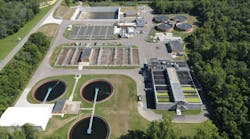The U.S. Environmental Protection Agency has approved the system-wide use of orthophosphate as the next step in preventing lead from leaching into Washington, D.C. drinking water.
The Washington Aqueduct, the water supplier to the Washington area, will begin feeding the orthophosphate system-wide on August 23. It is expected to take at least six months or longer for the orthophosphate treatment to decrease lead levels in the water.
Orthophosphate is a tasteless, odorless, food-grade additive used by many water systems nationwide to control corrosion in metal pipes. It works by building up a thin film of insoluble material in lead, copper, and iron pipes and fixtures. The film serves as a liner inside the pipe that keeps corrosive elements in water from dissolving the metal.
"The Washington Aqueduct’s decision to implement the orthophosphate treatment system-wide came after a group of technical experts reviewed preliminary results of the partial system application that began in June. Frequent sampling of the treatment area found no significant increase in bacteria, nor the occurrence of red water due to dissolved iron," said Rick Rogers, drinking water chief for the EPA mid-Atlantic region.
On August 3, EPA authorized the Aqueduct to expand treatment, and established operational parameters and monitoring requirements for the Aqueduct and the District of Columbia Water and Sewer Authority (D.C. WASA).
The system-wide application of orthophosphate includes the entire district water system, which also serves Arlington County and Falls Church, Va.
D.C. WASA and the Washington Aqueduct are preparing for the new treatment, planning additional monitoring, gearing up for possible customer complaints, and flushing out lines to minimize problems.
A community outreach program is now underway to inform residents of the new water treatment and advise them how to handle any adverse effects.
A possible temporary effect of orthophosphate treatment is red water. Red water is discolored water that results from a disturbance of rust deposits inside water mains. The addition of orthophosphate may cause this to occur, temporarily resulting in red water for some residents.
Source: U.S. Environmental Protection Agency

